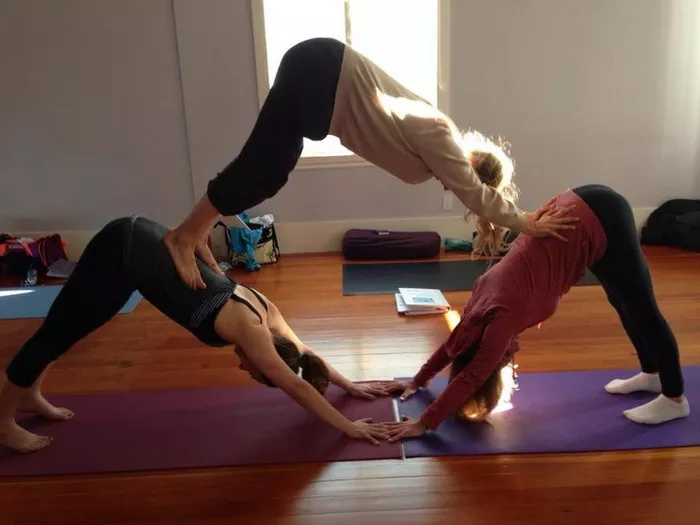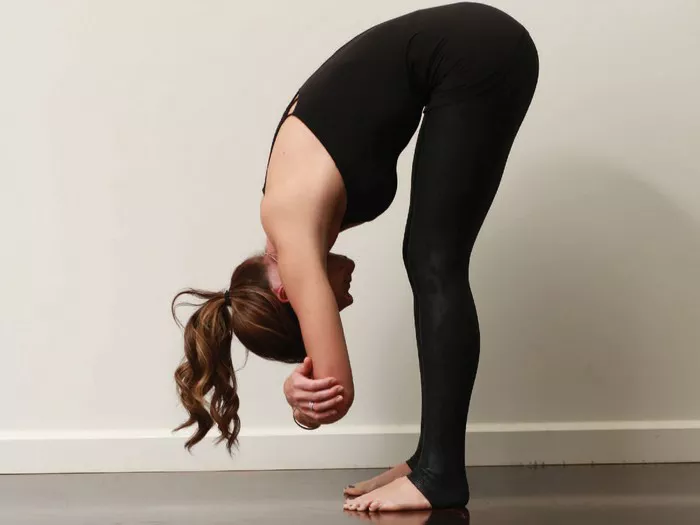Lower back pain is a common affliction affecting millions of people worldwide, with causes ranging from sedentary lifestyles to poor posture and muscle imbalances. While there are various treatment options available, yoga has gained recognition for its effectiveness in alleviating lower back discomfort. Yoga poses, or asanas, target specific muscles and promote flexibility and strength, providing relief and preventing future episodes of pain. In this article, we’ll explore five of the best yoga poses for lower back pain, along with their benefits and precise instructions for execution.
1. Cat-Cow Pose (Marjaryasana-Bitilasana)
Cat-Cow Pose is a gentle, flowing movement that helps to warm up the spine and increase flexibility in the lower back. It also stretches the back torso and neck, relieving tension and stress.
Instructions:
- Start on your hands and knees in a tabletop position, with your wrists aligned under your shoulders and your knees under your hips.
- Inhale as you arch your back, dropping your belly towards the floor and lifting your head and tailbone towards the ceiling (Cow Pose).
- Exhale as you round your spine towards the ceiling, tucking your chin to your chest and drawing your belly button towards your spine (Cat Pose).
- Repeat this movement for several breaths, flowing smoothly between Cat and Cow poses.
Benefits:
- Increases flexibility and mobility in the spine
- Relieves tension in the back, neck, and torso
- Stimulates the flow of cerebrospinal fluid, nourishing the spine
2. Child’s Pose (Balasana)
Child’s Pose is a restorative posture that gently stretches the lower back, hips, thighs, and ankles while promoting relaxation and stress relief.
Instructions:
- Begin on your hands and knees in a tabletop position.
- Lower your hips back towards your heels, keeping your arms extended in front of you or resting by your sides.
- Rest your forehead on the mat and allow your chest to sink towards the floor.
- Hold the pose for several breaths, focusing on deepening the stretch with each exhale.
Benefits:
- Stretches the lower back, hips, thighs, and ankles
- Relieves tension and stress in the back and neck
- Calms the mind and promotes relaxation
3. Downward-Facing Dog (Adho Mukha Svanasana)
Downward-Facing Dog is a foundational yoga pose that lengthens the spine and hamstrings while strengthening the arms, shoulders, and back muscles.
Instructions:
- Start in a tabletop position with your wrists aligned under your shoulders and your knees under your hips.
- Tuck your toes under and lift your hips towards the ceiling, straightening your arms and legs.
- Press firmly into your hands and feet, creating an inverted V shape with your body.
- Keep your spine long and your heels reaching towards the floor, but don’t worry if they don’t touch.
- Hold the pose for several breaths, focusing on lengthening the spine and releasing tension in the back.
Benefits:
- Lengthens and decompresses the spine
- Strengthens the arms, shoulders, and back muscles
- Improves posture and alignment
4. Sphinx Pose (Salamba Bhujangasana)
Sphinx Pose is a gentle backbend that stretches the spine and chest while strengthening the back muscles. It helps to alleviate stiffness and discomfort in the lower back.
Instructions:
- Lie on your stomach with your legs extended behind you and your elbows bent, forearms resting on the mat parallel to each other.
- Press firmly into your forearms and lift your chest and head off the mat, drawing your shoulder blades down and back.
- Keep your gaze forward and your neck in a neutral position, avoiding any strain.
- Hold the pose for several breaths, feeling a gentle stretch across the front of your torso and spine.
Benefits:
- Stretches the spine, chest, and shoulders
- Strengthens the back muscles
- Improves posture and spinal alignment
5. Supine Twist (Supta Matsyendrasana)
Supine Twist is a soothing pose that releases tension in the spine and hips while improving spinal mobility and digestion.
Instructions:
- Lie on your back with your arms extended out to the sides in a T shape, palms facing down.
- Bend your knees and draw them towards your chest.
- Exhale as you lower your knees to the right side of your body, keeping both shoulders grounded on the mat.
- Turn your head to the left and gaze towards your left hand.
- Hold the pose for several breaths, allowing gravity to deepen the twist and release tension in the spine.
- Repeat on the opposite side.
Benefits:
- Releases tension in the spine, hips, and lower back
- Improves spinal mobility and flexibility
- Stimulates digestion and detoxification
Conclusion
Incorporating these five yoga poses into your daily routine can help alleviate lower back pain and promote overall spinal health. However, it’s essential to listen to your body and consult with a healthcare professional before beginning any new exercise regimen, especially if you have pre-existing medical conditions or injuries. With consistent practice and mindfulness, you can experience relief from lower back discomfort and enjoy greater flexibility, strength, and well-being.
























